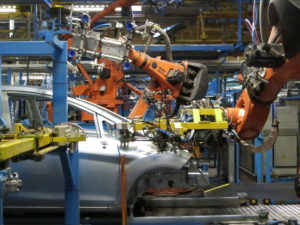 The following is a guest blog post from Computing Community Consortium (CCC) Council Member Maja J. Matarić from the University of Southern California and past CCC Chair Greg Hager from Johns Hopkins University.
The following is a guest blog post from Computing Community Consortium (CCC) Council Member Maja J. Matarić from the University of Southern California and past CCC Chair Greg Hager from Johns Hopkins University.
The New York Times released How to Make America’s Robots Great Again, an article that focused on overlooked realities of manufacturing and robotics. American factories hit a manufacturing record in 2016; 85 percent more goods were made than 30 years ago, but this success is due to automation, resulting in one third fewer jobs. At the same time, China is aggressively automating its manufacturing, with massive infrastructure investments in robotics and no public dialog about job loss.
As the article points out, to keep manufacturing in the US, and keep it competitive, US factories will need to hire US workers, but also continue to rapidly ramp up their automation by increasing their investment in robotics.
But here is the clincher: most manufacturing robots today are not made in the US (see a map of industrial robotics companies here: most of those are not well-funded manufacturing robot makers), and soon they too will be manufactured in China. The Chinese government has spent billions to make China competitive in robotics for manufacturing, for its own manufacturing needs as well as for export. Experts expect it to catch up to Europe and Japan within 5 to 10 years.
“Today, we buy a lot of stuff made in China by Chinese people. Tomorrow, we’ll buy stuff made in America — by Chinese robots (NY Times).”
The future of American manufacturing may rest on investing today in American research in robotics (where the US is still the leader in many areas, but is loosing ground due to insufficient research funding), with an emphasis on collaborative human-machine systems that leverage the synergy of strengths between people and machines, an approach that has better implications for labor economics than the alternatives.
In 2009, the CCC released A Roadmap for US Robotics, From Internet to Robotics (Robotics Roadmap). The Robotics Roadmap explored the capacity of robotics to act as a key economic enabler, specifically in the areas of manufacturing, healthcare, and in the service industry, 5, 10, and 15 years into the future and was influential in developing 2011’s National Robotics Initiative (NRI). An updated version of the Robotics Roadmap was released in November, 2016 and it expands on the topics discussed in the 2009 roadmap as well as addressing the areas of public safety, earth science, and workforce develop. You can read the full 2016 roadmap here.









